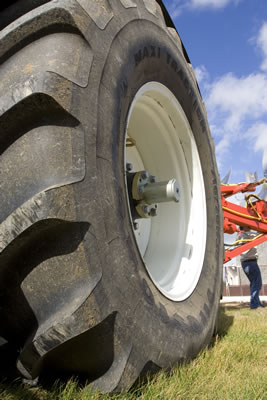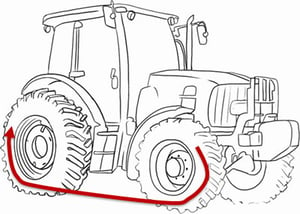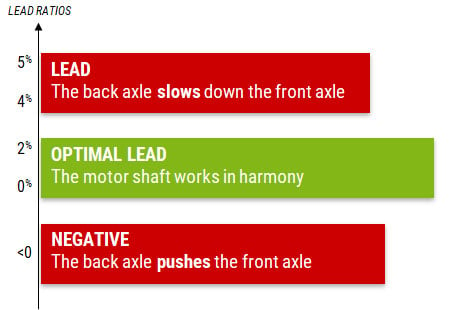So you've decided to increase the size of your tractor wheels to improve its performance, and in particular its loading capacity, which can increase by 35% with the right tyres.
But watch out – there are some pitfalls to avoid that could cost you dearly.

So you've decided to increase the size of your tractor wheels to improve its performance, and in particular its loading capacity, which can increase by 35% with the right tyres. But watch out – there are some pitfalls to avoid that could cost you dearly.
As you are no doubt aware, increasing the size of your tractor's wheels and tyres will improve its performance: soil compaction will be reduced because there will be a larger surface area in contact with the ground, and there will be less slip for the same reason. As a result, your tractor will use less fuel and, most importantly, it will be able to pull heavier loads because the volume of air inside a tyre is proportion to the weight it can bear. In short, bigger tyres mean bigger loads.
The tyre mount originally supplied with your tractor is rarely the most efficient. So if you use heavy tools and have to work in all weathers on loose or rough terrain, the decision to get the largest diameter rear wheel possible is a no-brainer.

Two identical tyres will have very different loading capacities depending on their quality.
A low-cost or budget tractor tyre may be appealing from a financial point of view, but it won't be in the same class as a tyre labelled as IF or VF technology, which is made from materials that can withstand considerable deformation of the sidewalls and is therefore capable of bearing 35% heavier loads.
When it comes to tyre width, it's the type of work you need it for that will be the deciding factor. For ploughing, if you increase the width you'll have better contact with the ground, and therefore optimal tractive force.
For treatment on the other hand, if the tractor needs to pass in between crop rows it will need much narrower wheels.

Respect the preponderance of 4WD
Once you've determined the maximum rear wheel diameter for your tractor and chosen the right agricultural tyre, you'll need to calculate the diameter of the front tyre to prevent any problems with the front wheels synchronising with the rear wheels.
This preponderance rule allows for a tolerance of 0 to 3%. Within this range, preponderance will be optimised and your tractor will be able to unleash its full power, as its drive shafts will be working in perfect harmony.
The rear axle will slow down the tractor's front axle, and the front axle assembly will be subjected to excessive mechanical stress. You will experience problems when steering, and your front tractor tyres will get worn much quicker than the rear ones.
The rear axle will push your tractor's front axle and the front shaft will lose its efficiency, the transmission will be damaged and you will have a lot of slip at the rear.

This is a relatively simple calculation. First off, find the value given for the "Front axle mechanical ratio" by your tractor's manufacturer.
Next, apply the following formula:
(Circumference of the front bearing - multiplied by - Front axle mechanical ratio – minus - Circumference of the rear bearing) divided by - Circumference of the rear bearing - multiplied by 100
In this example, the preponderance is correct and the tractor's efficiency will be excellent with larger wheels than those originally supplied.
To learn more and boost your farm's profits, Bridgestone Agriculture is offering you a free, detailed white paper that explains the essential role your agricultural tyres play in your productivity.
The most people who have read this article have also read the following articles, which are listed below in order of popularity:
This information is intended only to make you aware of the technical and functional aspects of agricultural tires and their use. It does not allow you to make a judgment or a definitive conclusion on a given problem. Only your agricultural tire expert is able to make a technical assessment and take a final decision, case by case.

BRIDGESTONE EUROPE NV/SA
AG Department
Leonardo Da Vincilaan 1
1930 Zaventem | Belgium
Our regional office:
Athena Drive, Tachbrook Park
Warwick CV34 6UX
United Kingdom